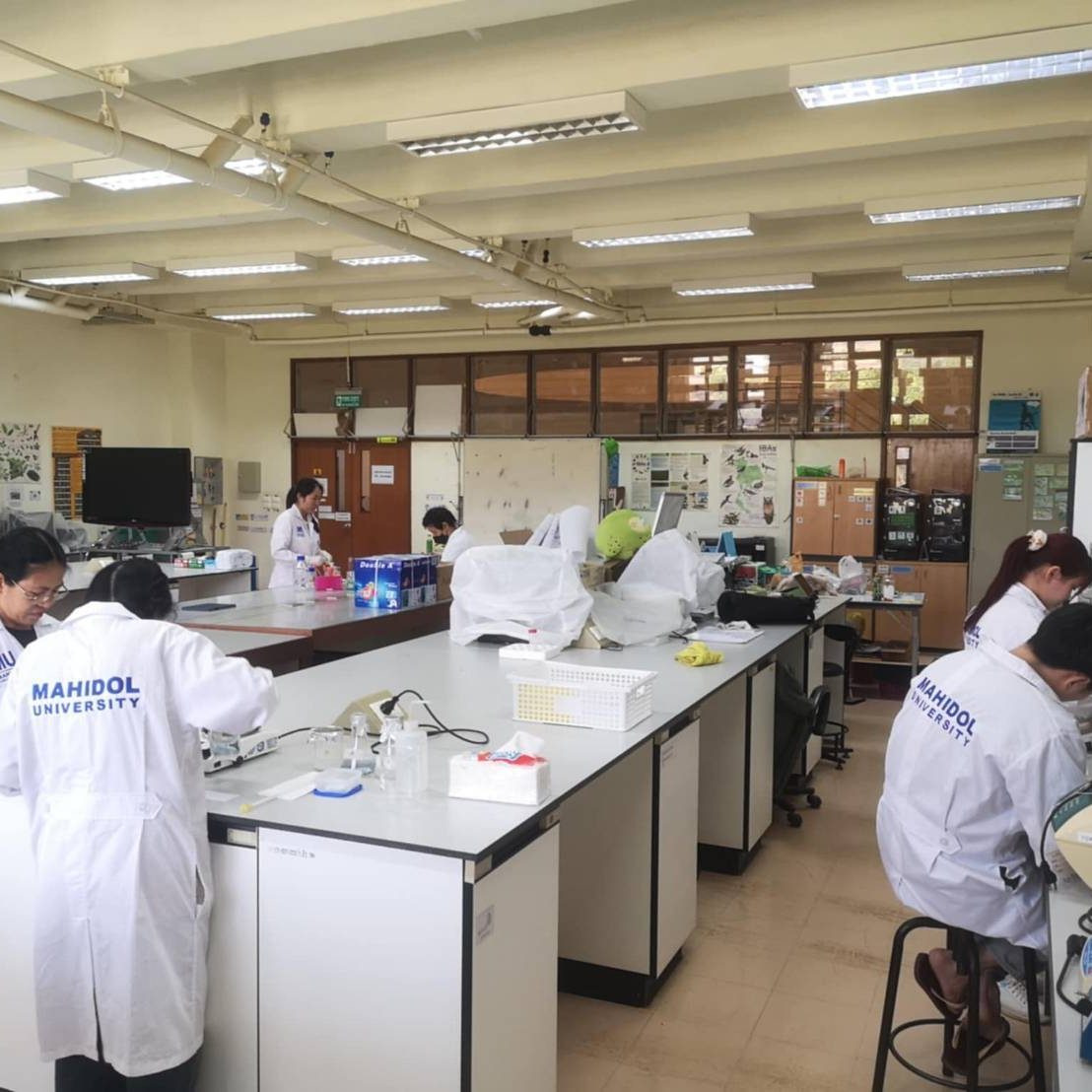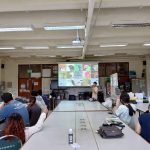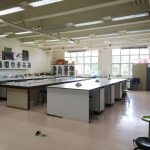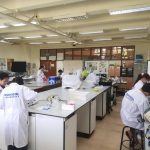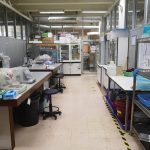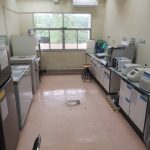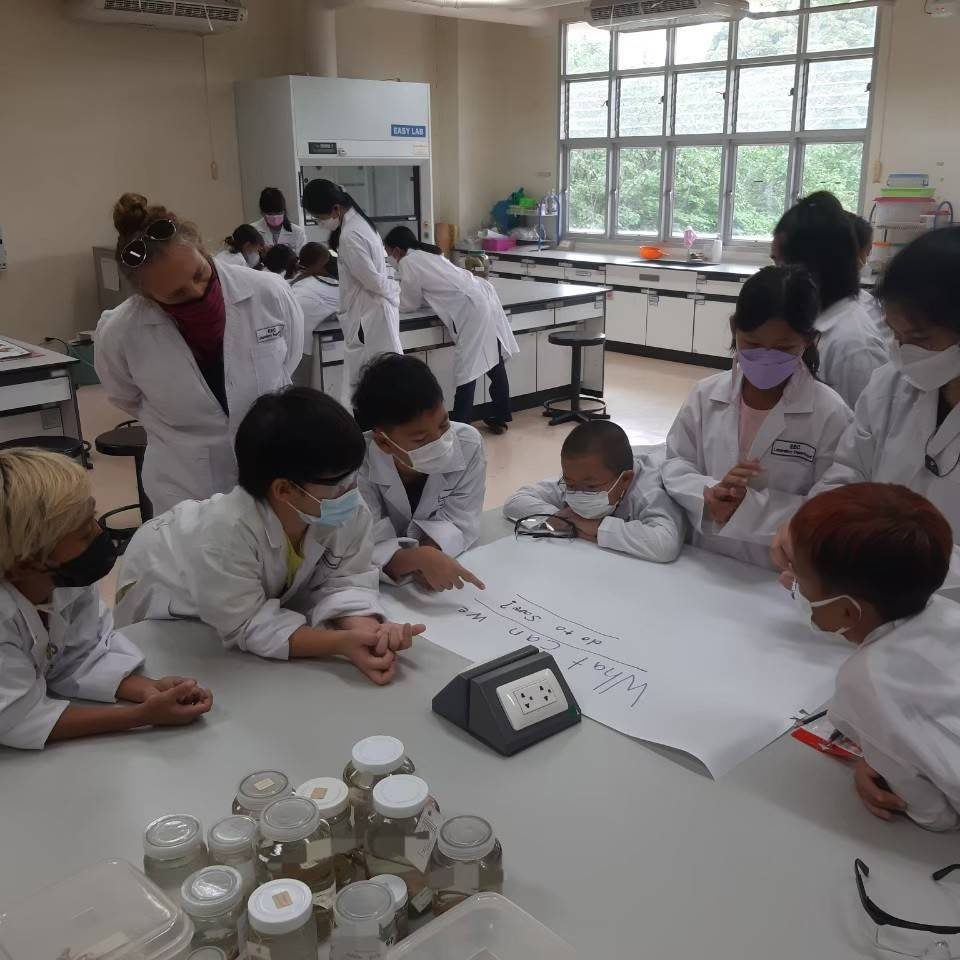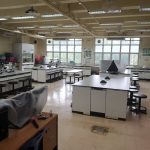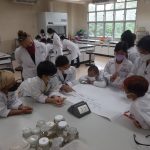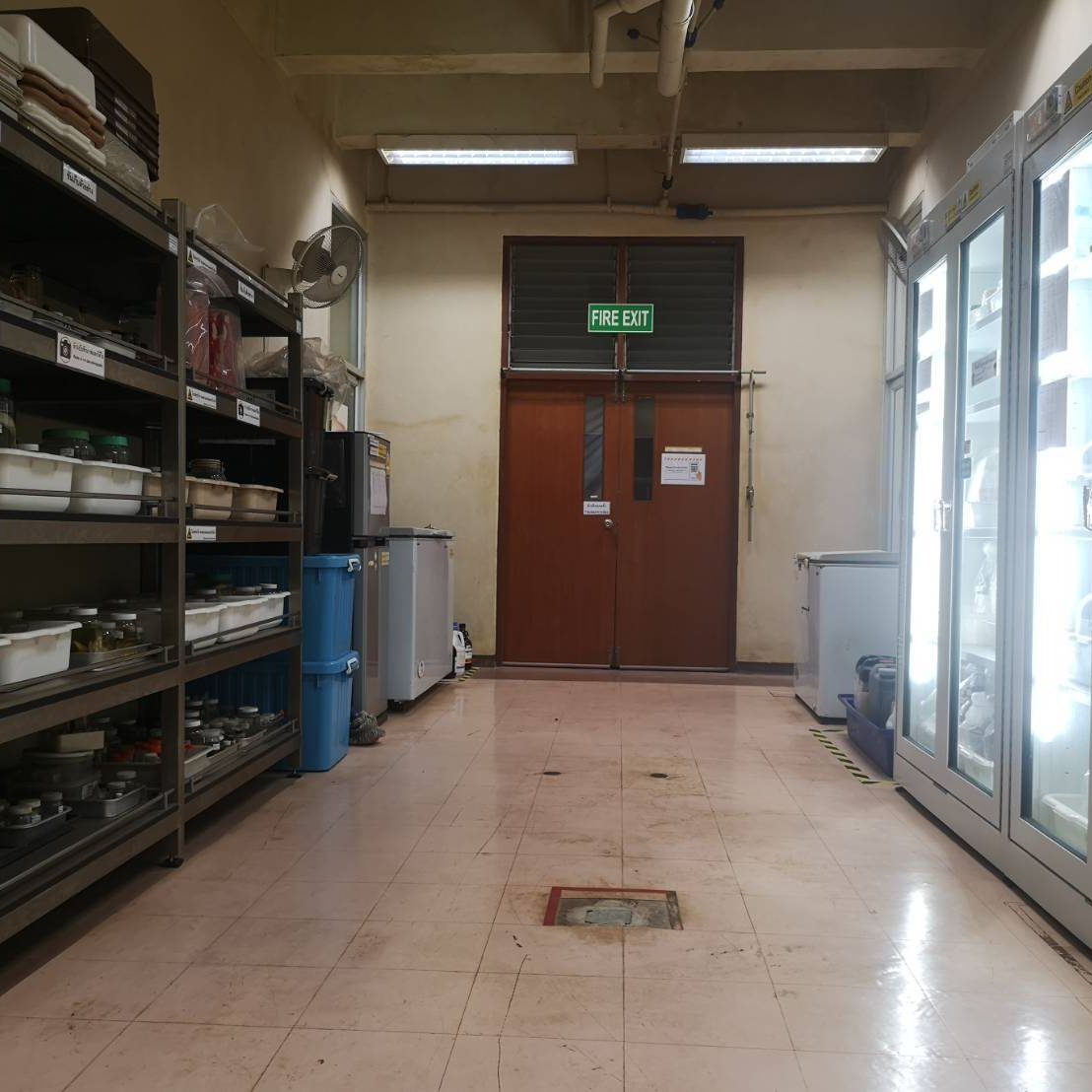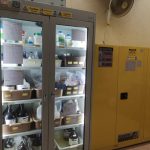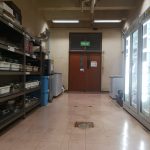| |
MUGE 100 |
General Education for Human Development |
3 (3-0-6) |
| |
Well-rounded graduates, key issues affecting society and the environment with respect to one’ particular context; holistically integrated knowledge to identify the key factors; speaking and writing to target audiences with respect to objectives; being accountable, respecting different opinions, a leader or a member of a team and work as a team to come up with a systematic basic research-based solution or guidelines to manage the key issues; mindful and intellectual assessment of both positive and negative impacts of the key issues in order to happily live with society and nature |
| |
SCMA 111 |
Calculus |
2 (2-0-4) |
| |
Limits, differentiation, continuity, applications of differentiation, integration, logarithm and exponential functions, inverse trigonometric and hyperbolic functions, techniques of integration, applications of integration, improper integrals, L’Hopital’s rule, functions of several variables and partial derivatives, total differentials and total derivatives, antiderivatives and integration, techniques of integration, improper integrals, applications of integration
|
| |
KACB 222 |
Ordinary Differential Equations in Biological Studies |
2 (2-0-4) |
| |
Linear ordinary differential equations; first-order ODEs; second-order ODEs; system of two first-order equation; formulating a model; steady-state solutions; applications to related problems; phase-plane methods and qualitative solutions; models for single species populations; predator-preys systems; model for molecular, limit cycles, oscillations, excitable systems
|
| |
KAID 270 |
Introduction to Statistics |
2 (2-0-4) |
| |
Probability, random variables and probability distributions, mathematical expectation, special probability distributions, descriptive statistics, sampling distributions, point estimation, interval estimation, hypothesis testing, elementary use of statistical software
|
| |
SCCH 103 |
General Chemistry I |
3 (3-0-6) |
| |
Stoichiometry, atomic structure, chemical bonding theory, representative and transition metal elements, organic chemistry, nuclear chemistry, environmental chemistry
|
| |
SCCH 104 |
General Chemistry II |
3 (3-0-6) |
| |
Chemical thermodynamics, chemical kinetics, chemical equilibrium, ionic equilibrium, electrochemistry, gas, liquid, and solid
|
| |
SCCH 118 |
Chemistry Laboratory |
1 (0-3-1) |
| |
General techniques in chemistry, simple experiment in qualitative and quantitative analysis, some experiments that are related to lectures, calculation related in each experiment, laboratory safety
|
| |
SCBI 102 |
Biology Laboratory I |
1 (0-3-1) |
| |
Microscopy, cell structure and function, tissue, cell division, genetics and natural selection, ecology, and behavior
|
| |
SCBI 104 |
Biology Laboratory II |
1 (0-3-1) |
| |
Classification of plants, invertebrates and chordates, process of development and regeneration, anatomy of frogs, hormone control and homeostasis, nervous system and control, Laboratory examination is required
|
| |
SCBI 124 |
General Biology I |
2 (2-0-4) |
| |
Basic concepts in biology, carbon and the molecular diversity of life, cell structure and function, energy and metabolism, cellular respiration, photosynthesis, principles of heredity, molecular biology of gene, evolution, population genetics, ecology and conservation biology
|
| |
SCBI 125 |
General Biology II |
3 (3-0-6) |
| |
Biodiversity and diversity status of Thailand, classification and diversity of Eubacteria, Archaea and Eukarya, reproduction, embryo development and organogenesis, animal form and function such as food procurement and digestion, respiratory system, circulatory system, immune system, homeostasis, hormones, and nervous system
|
| |
SCPY 110 |
General Physics Laboratory |
1 (0-3-1) |
| |
Elementary level of experiments designed to accompany some topics in Physics for Applied Science I & II (SCPY 167 and SCPY 168)
|
| |
SCPY 167 |
Physics for Applied Science I |
3 (3-0-6) |
| |
Mechanics: kinematics of particles, dynamics of particles, work and energy, linear momentum and collisions, rotational motions, elastic properties of matters, oscillatory motion, fluid mechanics: fluids statics, fluid dynamics; Thermodynamics: temperature and heat, the first law of thermodynamics, entropy and the second law of thermodynamics; Wave: wave motion, reflection, refraction, superposition of waves, sound and hearing, doppler effect of sound, standing waves, resonance, electromagnetic wave
|
| |
KAID 200 |
Organic Chemistry Laboratory |
3 (3-0-6) |
| |
Origin of life, structure and function properties of carbohydrates, proteins, enzymes and coenzyme, lipids, nucleic acids, vitamins and minerals as well as their metabolic pathways, synthesis of proteins and nucleic acids, mechanisms of gene expression, molecular biology techniques, hormones and applications of biochemistry in food and plants
|
| |
KAID 201 |
Basic Biochemistry Laboratory |
1 (0-3-1) |
| |
Principle and technique of spectroscopy, pH measurement and buffer preparation, properties measurement of carbohydrates, proteins, lipids and nucleic acids, enzyme kinetic, the determination of vitamin C from fruits including yeast metabolisms
|
| |
KAID 220 |
Basic Organic Chemistry |
3 (3-0-6) |
| |
Bonding and molecular structure of organic compounds, nomenclature, reactions of organic compounds; stereochemistry, synthesis and reactions of alkane, cycloalkane, alkene, cycloalkene, alkyne, aromatic hydrocarbon, halide, alcohol, phenol, ether, aldehyde, ketone, carboxylic acid and their derivatives, amine
|
| |
KAID 221 |
Basic Organic Chemistry Laboratory |
1 (0-3-1) |
| |
Experiments of basic organic chemistry including recrystallization; melting point, distillation, extraction and chromatography, the solubility classification; the use of models to study stereochemistry of organic substances; reactions of hydrocarbons, reactions of alcohols and phenols, reactions of aldehydes and ketones, reactions of carboxylic acids and derivatives, reactions of amines
|
| |
KACB 306 |
Basic Microbiology |
3 (3-0-6) |
| |
Basic knowledge of microorganisms, particularly bacteria and fungi, regarding shape, structure and functions, physiology and genetics, microbial classification and taxonomy; host-microorganism interaction, control and immunity; sterilization and disinfection; importance and an application of microorganisms in everyday uses and environment studies
|
| |
KACB 307 |
Basic Microbiology Laboratory |
1 (0-3-1) |
| |
Laboratory experiments on aseptic techniques and laboratory safety, staining techniques, morphological examination of microorganisms by microscope, preparation of the media, an isolation of pure culture, selection, classification, culture, growth and preservation of microorganisms
|
| |
KACB 319 |
Biostatistics |
3 (3-0-6) |
| |
Biological data; sampling methods; the descriptive statistics; probability distribution; sampling distribution; estimation; hypothesis testing; the completely randomized design (CRD), the randomized complete block design (RCBD) and an analysis of variance (ANOVA); chi-square test; regression; correlation; non-parametric statistics
|
| |
KACB 320 |
Biostatistics Laboratory |
1 (0-3-1) |
| |
The practices of using the computer software for collecting the biological data; the data analysis by descriptive statistics and inferential statistics; an Interpretation of the analyzed results from statistical software; the presentation and report of analyzed biological data
|
| |
KACB 101 |
Introduction to Conservation Biology |
2 (2-0-4) |
| |
Conservation biology, applied science, biology, biological diversity, conservation, protection, restoration, multidisciplinary, interdisciplinary, interrelated to social science and economics, sustainable development; threats to biodiversity, in-situ conservation, ex-situ conservation, participation, collaboration, stakeholders
|
| |
KACB 205 |
Botany |
3 (3-0-6) |
| |
Definition of botany, importance, subdisciplines of botany, cells and tissues, plant anatomy, morphology, physiology, genetics; reproduction and development; diversity and evolution of plant, taxonomy, and ecology
|
| |
KACB 206 |
Botany Laboratory |
1 (0-3-1) |
| |
Basic principles and basic skills of botany laboratory, cells and tissues, anatomy, morphology, physiology, genetics, reproduction and development, evolution, taxonomy, and ecology
|
| |
KACB 207 |
Ecology |
3 (3-0-6) |
| |
The scope and conceptual framework of ecology, physical environment, energy flow, nutrient cycling and biogeochemical cycle, biomes, plant and animal adaptations; population ecology, species interactions, community structure, community dynamics; landscape ecology, the ecosystem services, human impacts on the ecosystems
|
| |
KACB 208 |
Ecology Laboratory |
1 (0-3-1) |
| |
Field notetaking and laboratory report writing, the habitat type Identification and vegetation description, bioaccumulation and biomagnification; birds and habitats, the adaptation of lives on limestone mountain, the population growth, the population distribution; niche partitioning, species interactions, measuring community structure, colonizing plants, island biogeography, calculating ecosystem services values, sustainable resource uses
|
| |
KACB 209 |
Genetics |
3 (3-0-6) |
| |
Mendelian genetics; gene and environment interactions; extension of mendelisms; continuous inheritance; extranuclear inheritance; cell division; chromosome variations; human genetics and developments; the pedigree analysis; the population genetics; the molecular genetics: transcription, translation, and mutation; gene regulation; immune-genetics; genetic engineering; genetics and speciation; conservation genetics
|
| |
KACB 215 |
Zoology |
3 (3-0-6) |
| |
Basic concepts in biology through a study of the major lineages of invertebrate and vertebrate animals, with an emphasis on the morphology, anatomy, physiology, reproduction and development, the organic evolution, taxonomy, and the diversity of animals
|
| |
KACB 216 |
Zoology Laboratory |
1 (0-3-1) |
| |
Laboratory exercises in morphology, anatomy, physiology, reproduction and development, taxonomy, and the diversity of animals
|
| |
KACB 223 |
Basic Field Techniques for Ecological Survey |
1 (0-5-1) |
| |
Safety and preparations for working in wild habitats; using the essential field equipments and techniques for biodiversity survey; habitat description; necessary environmental variable assessment; sampling methods; systematic surveys; standardized surveys; biodiversity monitoring |
| |
KACB 301 |
Principles of Conservation Biology |
3 (3-0-6) |
| |
A history of conservation biology; values, level, patterns, losses of biodiversity; conservation ethics; extinction and vulnerability; threats to biodiversity; losses, conservation and human concerns; politics and economics in conservation, sustainable development; basic tools, methods and guidelines for the biodiversity conservation and management
|
| |
KACB 308 |
Basic Cell and Molecular Biology |
3 (3-0-6) |
| |
Biomolecules, structure, and function of organelles, cell membrane and cell wall, physiology of the cell, prokaryotic and eukaryotic cells; concept of molecular biology, gene expression and regulation mechanism, protein synthesis and transportation, gene and genome; molecular biology and the immune systems, regulation of cell cycle, cell differentiation; genetic engineering, laboratory techniques for molecular and cellular biology and an application for conservation biology
|
| |
KACB 309 |
Basic Cell and Molecular Biology Laboratory |
1 (0-3-1) |
| |
Laboratory techniques in molecular and cellular biology, science materials and the laboratory equipment; chemical preparation, specimen preparation for the light microscope; molecular cloning, restriction endonuclease, agarose gel electrophoresis; the DNA ligation, bacteria transformation, the selection of recombinant clones, the polymerase chain reaction (PCR), the DNA extraction, an application for conservation biology and biodiversity
|
| |
KACB 315 |
Principles of Evolution |
3 (3-0-6) |
| |
The origin of evolution and a synopsis of the evolution theory; biological variation and genetic polymorphism; natural selection and adaptation including social behaviors; population genetics and gene frequencies; species concept and speciation; the molecular evolution; the plant and animal evolution; the human evolution and coevolution
|
| |
KACB 318 |
Biodiversity and Systematics |
2 (2-0-4) |
| |
Concepts in taxonomy and systematics, evidences and tools for systematic study, essential database and information resources for updated systematics, the management of botanical and zoological specimens and their database; updated and acceptable tree of life and phylogenetic trees, interrelated systematics and biodiversity; systematics and biodiversity conservation management
|
| |
KACB 322 |
Field Experience in Ecological Research |
1 (0-5-1) |
| |
Field experience; practical training; ecological techniques; field data collection; wildlife estimation and monitoring; field data analysis
|
| |
KACB 323 |
Environmental Science |
3 (3-0-6) |
| |
Concepts in environmental science, biotic and abiotic factors, population, dynamics, community of living things, the ecosystem, impacts of human on natural resources, pollution, and management |
| |
|
| |
KACB 407 |
Geo-informatics for Conservation Biology |
3 (2-3-5) |
| |
Principles of geoinformatics, the coordinate system, the geographic information system, the global positioning system, the spatial analysis, the 3D analysis; basics of remote sensing, GIS- data input, output, interpretation and presentation, problem-based learning in conservation biology; using GIS for biodiversity conservation
|
| |
KACB 493 |
Seminar in Conservation Biology I |
1 (0-3-1) |
| |
Searching, gathering, compiling, discussions, and concluding the information from reliable scientific research articles for individual interested topics related to conservation biology; Individual presentations under the advice of instructors; performing the appropriate manner as participants in the seminar
|
| |
KACB 494 |
Seminar in Conservation Biology II |
1 (0-3-1) |
| |
Independent inquiry and presentations for individual interested topics related to conservation biology; performing as organizers and participants in the seminar appropriately
|
| |
KACB 495 |
Project in Conservation Biology |
4 (0-12-4) |
| |
Conducting a short-term research project in the individual interested topic related to conservation biology, under the supervision of an advisor and the committee
|
| |
KACB 332 |
Principles of Plant Physiology |
3 (2-3-5) |
| |
The structure and function of plant cells, the membrane transport, respiration, photosynthesis; form and function of plants, plant growth and development; flowering, seed germination, the seedling development, plant hormones, responses of plants to the environments; soils and plant nutrition, the movement of water and solutes, applications of principles of plant physiology
|
| |
KACB 343 |
Non-vascular Plants Biology |
3 (2-3-5) |
| |
A study of the comparative morphology, ecology, diversity and systematics of representative algae, macrofungi, lichens, bryophytes; the use of the knowledges about these orgenisms in the nature conservation and environmental works, and necessary field and laboratory techniques for their studies
|
| |
KACB 345 |
Invertebrate Zoology |
3 (2-3-5) |
| |
An understanding of taxonomy, morphology, structure, function and evolution of the various invertebrate phyla of animals; laboratory exercises will including the dissection, identification and taxonomic classification, and description of fundamental anatomical traits found within representative phyla
|
| |
KACB 346 |
Vertebrate Zoology |
3 (2-3-5) |
| |
A comparative study of morphology, anatomy, physiology, ecology, evolution, diversity and systematics of vertebrates; updated surveys and guidelines for the conservation management of vertebrates; necessary field and laboratory techniques to vertebrates studies
|
| |
KACB 347 |
Entomology |
3 (2-3-5) |
| |
Insect morphology, physiology, reproduction, development and metamorphosis, taxonomy and nomenclature; theorem of human-insect relationship, and other arthropods; collection and taxonomy laboratories
|
| |
KACB 348 |
Fish Taxonomy |
3 (2-3-5) |
| |
Systematic and evolution of marine and freshwater fishes and their biology; Cyclostomes (lampreys, Order Petromyzontiformes; hagfish, Order Myxiniformes); Chondrichthyes (Cartilaginous fish); Osteichthyes (bony fish). External morphological fish and internal organ function, the classification of fish, the classification of fish larvae, how to identify the new genus and new species, advance of fish sampling methods in the field, eco-evolution of fish relate to aquatic ecosystems, fish conservation
|
| |
KACB 349 |
Mammalogy |
3 (2-3-5) |
| |
Mammals, characteristics, diversity, systematics, taxonomy, evolution, phylogenetics, morphology, anatomy, physiology, ecology, behavior, zoonoses, specimen preparation, basic laboratory, field techniques, applications for conservation and management |
| |
|
| |
KACB 354 |
Economic Botany |
3 (3-0-6) |
| |
Botany of important economic crops of the world and Thailand, phytogeography, emphasis on morphology and taxonomy of plants used for agricultural industry, food, fiber and fabric, wood, medicine, oil, ornamental purposes and others.
|
| |
KACB 355 |
Ethnobotany |
3 (3-0-6) |
| |
Introduction to botany, plant morphology, physiology, phytochemistry. It also includes plant taxonomy, scientific name and local name, emphasized on local medicinal plants. Principles of ethnobotany, biodiversity and sustainable utilization based on culture, belief and local wisdom.
|
| |
KACB 356 |
Plants and Global Change |
3 (3-0-6) |
| |
Overview and synthesis of global atmospheric and climate change and its impacts on plants, including crop and natural ecosystems. Loss of biodiversity and climatic factors on plant function, growth and development, and phenology including the underlying mechanisms of adaptation. Direct effects and responses to the environment in the context of climate change. Roles of plants in environmental improvement.
|
| |
KACB 357 |
Principles of Plant Taxonomy |
3 (2-3-5) |
| |
Principles of plant taxonomy, history of plant taxonomy, plant classification and evolution; plant nomenclature, identification using the key; specimen preparation and preservation; the main characters of each plant group, emphasize on flowering plants, orders and families of flowering plants; stereomicroscope skill practice |
| |
KACB 363 |
Diversity and taxonomy of insects |
3 (2-3-5) |
| |
Diversity of insect, evolutionary relationships, taxonomic characters and keys, insect classification, Entognatha, Insecta; Apterygota and Pterygota, surveys of insects; collecting and preserving, and examined in the laboratory using dichotomous keys |
| |
KACB 364 |
Basic techniques for cytology and histology |
3 (2-3-5) |
| |
History of cell study, methods for studying cell and tissue, chemical components and biomolecules of cell and tissue, structure of prokaryotic and eukaryotic cells, animal tissue system, plant tissue system, type of microscopes, the principles and basic techniques of sample preparation for microscopic study, practices of preparing the whole mount, practices of preparing permanent slide of animal tissues and plant tissues, applications of cell and tissue knowledge for other science disciplines |
| |
KACB 365 |
Cryobiology and Ex situ Biodiversity Conservation |
3 (2-3-5) |
| |
Basic theory of ice physics and phase transition; principle and role in cryopreservation; history of cryopreservation progress; role of cryoprotectants and antifreeze protein in cryopreservation; changes and modification of living cell during freezing condition; methods in cryopreservation for banking of various organism and its applicable in combination with assisted reproductive technology (ATR) and transplantation technology for ex situ biodiversity conservation |
| |
|
| |
KACB 366 |
Methods in Molecular Biology |
3 (2-3-5) |
| |
The fundamental principles of molecular biology, molecular genetics, genetic variation and the biochemistry of DNA replication transcription and protein synthesis, mechanisms of gene regulation and gene expression, relation of molecular biology to current laboratory techniques and application, laboratory practices of important techniques in molecular biology, recombinant DNA technology, analysis of gene expression, molecular identification and phylogenetic analysis
|
| |
KACB 396 |
Ornithology |
3 (2-3-5) |
| |
The origin and evolution of birds, flight, morphology, physiology, behavior, population, migration, geographical distribution; the importance and conservation of birds, bird identification, laboratory and field trips
|
| |
KACB 328 |
Freshwater Biology |
3 (2-3-5) |
| |
The distributions of aquatic organisms and environmental factors in ecology of lotic and lentic habitats, the ecology of invertebrates, phytoplankton, zooplankton, algae, aquatic plants, protozoa, fish, and their adaptation; energy transfer; community structure; and their relationship to environment; impact of human activities on freshwater resources; laboratory including field trips and identifications of freshwater organisms, their community structure and techniques of sampling in the field
|
| |
KACB 350 |
Ecology of Wetlands |
3 (3-2-5) |
| |
Properties of wetlands, definition and classification, wetland functions, wetland biogeochemistry, microalgae, aquatic macroinvertebrates, wetland plants and animals, diversity of wetlands, zonation and succession, a functional approach, factors controlling properties of wetlands, hydrology, disturbances, herbivory, burial, fertility, competition, wetland conservation, restoration, and management
|
| |
KACB 370 |
Essentials of Animal Behavior |
3 (3-0-6) |
| |
Basic history of animal behavior studies, concepts in animal behavior; causation; ontogeny; function; and evolution, cost and benefit of behavior, genetic and environmental basis of behavior, basic neural control to behavior, activity budget and maintenance behavior, social behaviorม animal cognition and animal welfare, human behavior, practical application of behavioral studies to conservation and field excursion
|
| |
KACB 371 |
Methods for Animal Behavior Research |
2 (1-2-3) |
| |
Ethics in animal behavior research, bibliographic research, development of hypothesis and scientific question, creating ethogram, subject and study design, techniques and technology in behavioral data recording, basic data type and behavioral analysis, interpreting and communicating the behavioral finding, field excursion in animal behavior research.
|
| |
KACB 372 |
Zoonotic Diseases and Conservation Biology |
3 (3-0-6) |
| |
Definitions of zoonotic diseases, emerging and re-emerging diseases, zoonotic pathogens such as viruses, bacterial, parasites, and fungi, epidemiology, monitoring and surveillance of the diseases, diagnostic methods and detection techniques, concepts of disease ecology, the impact of diseases on host populations and implications in conservation biology
|
| |
KACB 373 |
Plant Ecology |
3 (2-3-5) |
| |
Distribution and abundance of plants and their interactions with the abiotic environment and other organisms. Major conceptual issues and areas of current research in plant ecology; plant life histories, populations, communities, and plant-animal interactions (pollination, dispersal, herbivory). Labs include greenhouse, field experiments, and field trips with an exploration of plant biodiversity of the campus and region. Terrestrial systems are emphasized. |
| |
KACB 374 |
Tropical Forest Ecology |
3 (3-0-6) |
| |
The definition and importance of tropical forests, the comparative study of tropical forest in different regions and continents; biotic and abiotic factors in the tropical forest ecosystem the tropical forest ecosystem and biodiversity; flora and fauna, structure and function of the tropical forest ecosystem; dynamics of tropical forests, the major threats and the concept of tropical forest conservation, field excursion in tropical forest |
| |
KACB 414 |
Restoration Ecology |
3 (3-0-6) |
| |
Definitions, significance, principles and concepts related to restoration ecology, the relationships between restoration and conservation biology; the restoration focusing on plants, animals, the ecosystems, landscapes, and physical resources; the organization levels of restoration, impacts of invasive species, guidelines for planning and monitoring restoration program, and related current issues/studies |
| |
KACB 416 |
Wildlife Ecology and Conservation Management |
3 (3-0-6) |
| |
Necessary concepts and principles of biology for studying wildlife ecology; wildlife population; wild population; captive breeding population; wildlife monitoring; wildlife population restoration; policy and legislation for conserving wildlife; updated wildlife conservation management |
| |
KACB 361 |
Ecotourism Planning and Management |
3 (3-0-6) |
| |
Definitions and importance of ecotourism, ecotourism participants, ecotourism management planning; site conservation planning, the preliminary site evaluation, full site diagnosis, zoning for visitor use, recreation opportunity spectrum; visitor site planning and design, sustainable infrastructure design, the revenue generating mechanisms, naturalist guide, visitor impact monitoring and management, ecotourism business development, business model canvas, the ecotourism business model; an implementation of the management plan and the measure of success |
| |
KACB 380 |
Environmental Education |
3 (3-2-5) |
| |
Goals, definitions, and conceptual framework of environmental education, basic learning theories, theories involving cultivating environmental literacy, emotion and learning, teaching strategies for environmental education, STEAM and environmental education, project-based learning, service-learning, citizen science, environmental education lesson plan, designing on-site activities |
| |
KACB 381 |
Communication for Conservation |
3 (2-2-5) |
| |
Roles and importance of communication for conservation, the knowledge-attitude-behavior relationship, attitude assessment, theories involving developing specific conservation behavior, creating messages for communication, communication tools, social marketing for biodiversity conservation |
| |
KACB 399 |
Training in Conservation Biology |
3 (0-9-3) |
| |
Training to be an officer working related to the biodiversity conservation, action planning, implementing, identifying and solving problems, team working, evaluating, deciding, concluding, assignment documentation writing |
| |
KACB 390 |
Environmental Pollution |
3 (2-3-5) |
| |
Studies in the general ecology of air, soil, aquatic and pristine conditions; causes of the environmental condition; global warming, water pollution, soil pollution and landfill, air pollution, particulate matter (PM10, PM2.5)pesticide pollution, noise pollution, radioactive pollution, heavy metal pollution, groundwater contamination; analyses of pollution; air pollution, water pollution, soil pollution and landfill, particulate matter (PM10, PM2.5), pesticide pollution, noise pollution, heavy metal pollution, groundwater contamination; simple and advanced methods for environmental pollution relating to environmental law |
| |
KACB 391 |
Environmental Management |
3 (2-3-5) |
| |
Studies in the environmental management; opinions on use and conservation of natural resources, protection of habitats and control of hazards, spanning the field of environmental management regardless of traditional disciplinary boundaries; communication improvement; making ideas, results from any field available to practitioners from other backgrounds; contributions drawn from various fields; biology, botany, chemistry, climatology, ecology, ecological economics, environmental engineering, fisheries, environmental law, forest sciences, geosciences, information science, public affairs, public health, toxicology, zoology and more; environmental management presented the comprehensive work; academic research, professionals outside universities, business sectors, government sectors, research establishments, and public interest groups; presenting a wide spectrum of viewpoints and approaches |
| |
KACB 392 |
Environmental Impact Assessment |
3 (3-0-6) |
| |
Multidisciplinary application in environmental impact assessment; environmental impact analysis procedures; environmental impact assessment techniques and methods; environmental impact management and control; preparation of environmental impact reports, public participation in environmental impact assessments (EIA), problems in the preparation of environmental impact reports, differences in environmental impact assessments in Thailand and abroad in both the public and private sectors; Thailand’s future environmental impact assessment |
| |
KACB 393 |
Microbial Biodegradation and Waste Utilization |
3 (2-3-5) |
| |
Principles of biodegradation; type of recalcitrant compounds; impact of pollutant chemical structure on biodegradation; fate and transport of contaminants in environment (soil and water bodies); microbial biodegradation of recalcitrant compounds including xenobiotics and toxic chemicals; isolation and screening of the potential microorganisms responsible for bioremediation in contaminated environment; and utilization of wastes from agriculture, industry, and communities into value-added products by efficient microorganisms and their metabolites. |
|
|
|
| |
|
| |
|
| |
|
| |
|



















